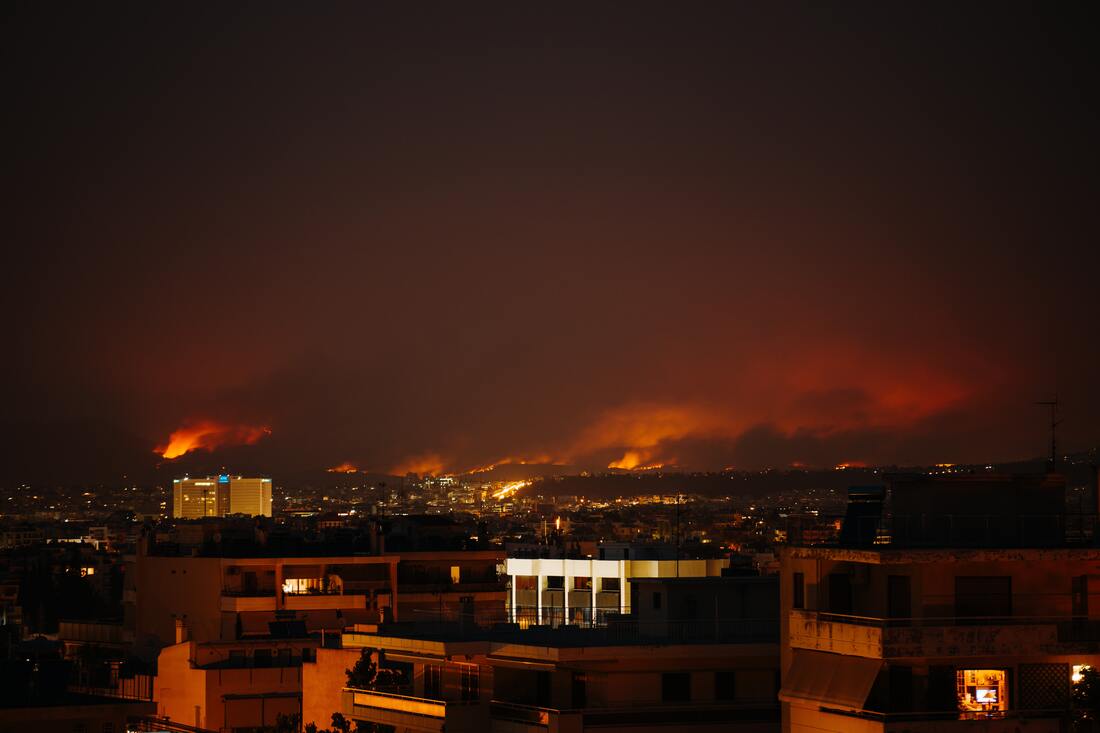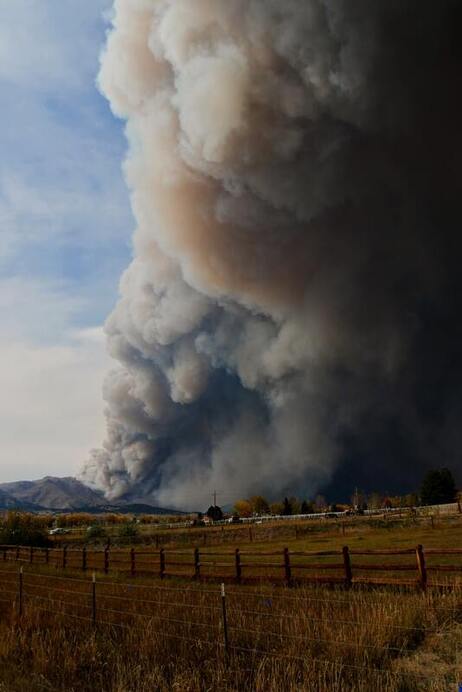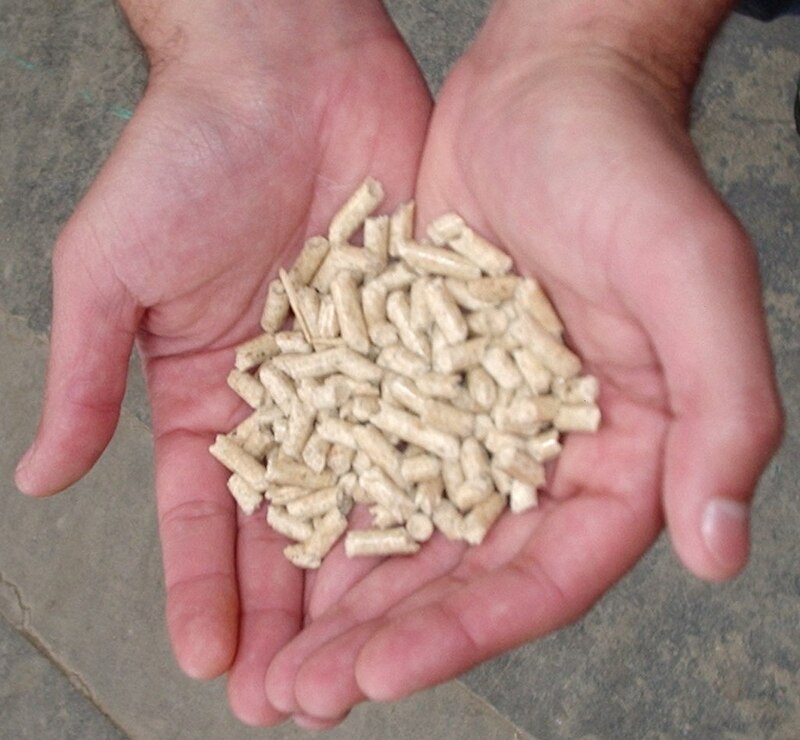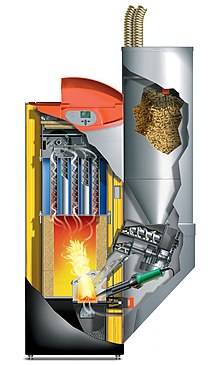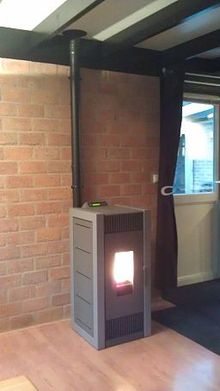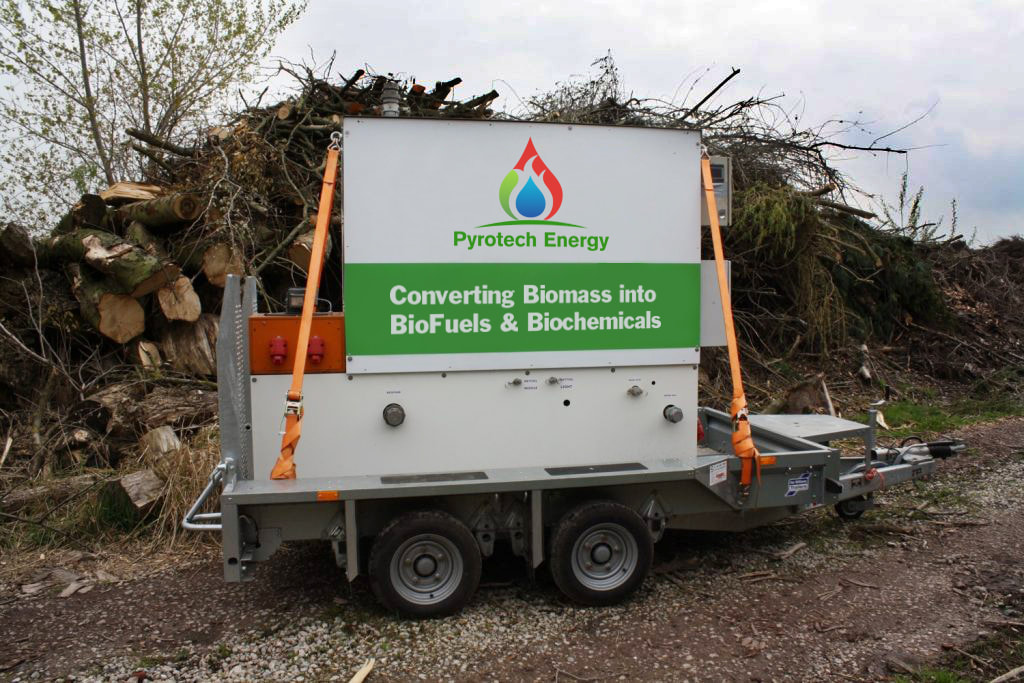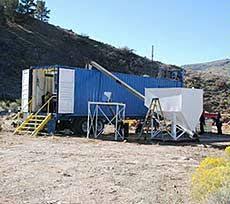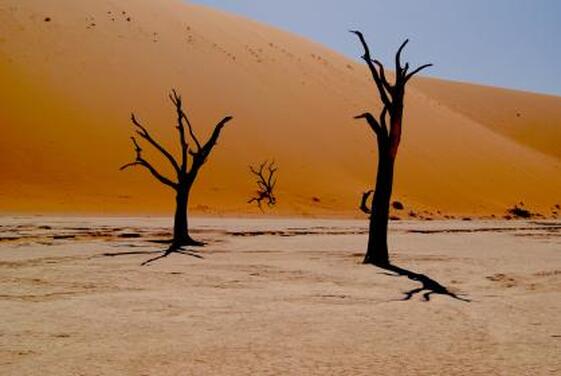Controlled burns to reduce wildfire hazard contribute every bit as much to climate change as wildfire.
Every year for the last several, as the planet warms and the permadrought deepens, the wildfire season has come earlier, lasted longer, and destroyed more forests, farms, homes and towns. There is evidence in the fossil record, particularly that of the End Permian mass extinction, that as the planet warms and dries as it enters a temperature excursion, much of it burns on its way to becoming desert. We’re well into that. We’ve already lost millions of acres, thousands of buildings, several towns, and dozens of lives in the Western United States alone; Siberia, Greece, and parts of Europe burned last year, too. And it’s only going to get worse.
Like a methane excursion, wildfire is a self-reinforcing feedback loop. As the planet burns it converts gigatons of carbon stored in biomass and soil into CO2, and into carbon and nitrogen compounds like methane and nitrous oxides that are even worse greenhouse gasses, and dumps them into the atmosphere. There they speed warming, drying the planet further, producing more wildfires, more greenhouse gasses, and more warming.
Decades of misguided management have left our forests choked with dead wood and brush, a thick understory that is nothing but fuel. In many places there is too much fuel for a controlled burn to be a safe way to clean up the mess; controlled burns frequently get out of control. The Hermit's Peak fire, near Las Vegas, New Mexico, the second week of May, 2022, became that state’s largest wildfire ever in a little over a week. It had burned more than 300,000 acres—almost 500 square miles—and hundreds of structures, and was only 40 percent contained as of May 20. But the even larger problem with controlled burns is that they contribute every bit as much to climate change as a wildfire burning the same fuel, while they create the same air pollution, which kills 107,000 Americans and 7 million people around the globe every year.
Every year for the last several, as the planet warms and the permadrought deepens, the wildfire season has come earlier, lasted longer, and destroyed more forests, farms, homes and towns. There is evidence in the fossil record, particularly that of the End Permian mass extinction, that as the planet warms and dries as it enters a temperature excursion, much of it burns on its way to becoming desert. We’re well into that. We’ve already lost millions of acres, thousands of buildings, several towns, and dozens of lives in the Western United States alone; Siberia, Greece, and parts of Europe burned last year, too. And it’s only going to get worse.
Like a methane excursion, wildfire is a self-reinforcing feedback loop. As the planet burns it converts gigatons of carbon stored in biomass and soil into CO2, and into carbon and nitrogen compounds like methane and nitrous oxides that are even worse greenhouse gasses, and dumps them into the atmosphere. There they speed warming, drying the planet further, producing more wildfires, more greenhouse gasses, and more warming.
Decades of misguided management have left our forests choked with dead wood and brush, a thick understory that is nothing but fuel. In many places there is too much fuel for a controlled burn to be a safe way to clean up the mess; controlled burns frequently get out of control. The Hermit's Peak fire, near Las Vegas, New Mexico, the second week of May, 2022, became that state’s largest wildfire ever in a little over a week. It had burned more than 300,000 acres—almost 500 square miles—and hundreds of structures, and was only 40 percent contained as of May 20. But the even larger problem with controlled burns is that they contribute every bit as much to climate change as a wildfire burning the same fuel, while they create the same air pollution, which kills 107,000 Americans and 7 million people around the globe every year.
You absolutely can burn biomass cleanly, creating very little besides carbon dioxide and water vapor, very little toxic air pollution. You want the wood very dry, and split/divided small, for a lot of surface area. You need to evenly feed every bit of it the right amount of air. Too much air is almost as bad as too little; it cools the flame below the 1128 °F. ignition point of carbon monoxide, and burning the CO to CO2 is what provides the heat—over 2200° undiluted—needed to ignite the rest of the nasties.
Open burning is chaotic and dirty. Ever gotten a good lungful of campfire smoke? It’s way worse than tobacco, isn’t it. Many complex hydrocarbon molecules containing other elements, including metals (toxic), get either too little oxygen or too little heat to burn completely to CO2 and H2O and a bit of ash. There is always water present to add to the chemistry, and the more water, the cooler the burn and the worse the chemistry, so an open-air burn creates literally thousands of nasty carcinogenic compounds as it worsens climate change.
There is a better way.
One of the IPCC's worst suggestions is that we convert croplands to grow energy crops, burn those to generate electricity, and capture and sequester the CO2: BECCS, bioenergy with carbon capture and storage. Never mind that geological sequestration of CO2 is still mostly wishful thinking, and would be horribly expensive, or that a quarter of the people on the planet are already chronically hungry, so that taking croplands out of food production is a psychopathic obscenity (American gasohol industry, I’m talking to you). We already have an energy crop, the brush and overgrowth in our forests. We’re wasting it, pouring gasoline on the climate-change fire, and literally killing ourselves doing so.
There is a much better way.
Why don’t we send crews out, under the supervision of foresters charged with producing the healthiest forests possible, to thin, bring out timber, poles and firewood, where they’re accessible, and chip the brush and waste? Pacific Biochar [i] hauls chipped brush and slash to some of the many small local lumber mills dotted across the West, many now shut down. Those mills burned “hogged fuel” to generate their own electricity. Many of those generators can be put back into service, they’re already tied to the grid, and they already have electrostatic precipitators to take particulates, bad for lungs and ice sheets, out of their exhausts.
Pacific Biochar tweaks the boiler so it burns the “producer” gasses that cook out of the wood waste, while leaving as much as half the mass of the wood as biochar. Farmers and gardeners were paying $1.29/pound or $2580/ton for biochar in April 2022. Adding it to the soil sequesters the atmospheric carbon it is composed of for centuries if not millennia. You want bioenergy with carbon capture and storage? This is the smart way. Add Ethan Novek/Innovator Energy’s [ii] inexpensive ammonia-and-salts tech for capturing the CO2 from the exhaust, and this scheme could, with clean-electric equipment and vehicles, be almost 100 percent carbon negative, take almost all of the carbon captured in that wood out of the atmosphere, while also avoiding the fossil fuels it replaces. And spreading char on the soil is an ‘ellova lot less PITA than trying to store CO2 in deep geological formations (read: using it to bring more oil out of wells).
Hover cursor over images to read captions.
You can also turn wood waste directly into pellet fuel right out in the woods; you don't want to truck anything back to town that you can't sell. Pellet mills come in all sizes, and some are eminently portable. Pellet stoves burn very clean, and are better than 90 percent efficient--they get almost all of the available heat out of the wood and into the house. You’re offsetting fossil gas, or gas-or coal-fired electricity, with carbon that came out of the atmosphere in the first place, so you’re preventing fossil carbon being added to the atmosphere. All good. *
EVEN BETTER are pyrolysis devices, gasifiers that cook hydrocarbons into wood vinegar (acetic acid, widely used in farming and industry), pyrolysis oils from which we should be able to extract a host of chemicals now made from petroleum; producer gas—mostly CO and H2— that can be burned very cleanly for energy, or recombined into liquid fuels and other useful chemicals—and char.
EVEN BETTER are pyrolysis devices, gasifiers that cook hydrocarbons into wood vinegar (acetic acid, widely used in farming and industry), pyrolysis oils from which we should be able to extract a host of chemicals now made from petroleum; producer gas—mostly CO and H2— that can be burned very cleanly for energy, or recombined into liquid fuels and other useful chemicals—and char.
Pyrolyzers are available in sizes right for farm, forest, or city. Add one, and a pellet mill, to the lumber mill where you burn wood gas for electricity, but make bio oils with the pyrolizer from suitable wastes. Or pull a right-size device out to a logging landing, or put a fun-size unit on an articulated truck, like a Mercedes-Benz Unimog, and take it deep into the woods. Send back all kinds of useful chemicals that don’t have to be made from petroleum or fossil gas, and blow the char back onto the soil, along with crushed aluminosilicate rock. That's "enhanced weathering," and it sucks carbon out of the atmosphere while it sweetens acid soils and adds minerals. And while we’re there, add sustainable soil nutrients like compost. We've been strip-mining our forest soils, too. If we don't take care of them Oregon will look like Scotland.
Adding char to the soil sequesters the carbon in it for centuries to millennia, and it is an amazing soil amendment: the next crops of food, timber, and biomass will grow and sequester carbon faster. We might start this industry with the Civilian Climate Corps, and carbon-credit monies, and grow it into private enterprise as we develop clean wood-waste energy, pyrolysis-oil refineries, and markets for char.
Reducing the wildfire danger to towns, homes, farms and timber has value we have to figure out how to pay for, too. Or we can continue business as usual, watching the world burn, wasting a valuable energy/chemicals/soil amendments crop, losing control of fires that destroy everything in their path, killing ourselves with air pollution, pouring gasoline on the climate change fire, and turning ever more of the planet to desert just as eight or nine or ten billion of us get hungry. er.
Adding char to the soil sequesters the carbon in it for centuries to millennia, and it is an amazing soil amendment: the next crops of food, timber, and biomass will grow and sequester carbon faster. We might start this industry with the Civilian Climate Corps, and carbon-credit monies, and grow it into private enterprise as we develop clean wood-waste energy, pyrolysis-oil refineries, and markets for char.
Reducing the wildfire danger to towns, homes, farms and timber has value we have to figure out how to pay for, too. Or we can continue business as usual, watching the world burn, wasting a valuable energy/chemicals/soil amendments crop, losing control of fires that destroy everything in their path, killing ourselves with air pollution, pouring gasoline on the climate change fire, and turning ever more of the planet to desert just as eight or nine or ten billion of us get hungry. er.
Welcome to Tatooine.
-- -- --
* Taking waste wood out of the woods as pellets to heat homes, instead of burning fossil gas, will help. But entire forests are being cut, in British Columbia and the American Southeast, and whole trees, not just the bits that can't make lumber or paper, are being made into pellets and shipped to Europe to fire power plants on "carbon neutral" biofuels instead of coal. For so many reasons, this is not a sustainable practice. This post is already long: perhaps I'll do a separate post on the abuse, the greenwashing, of the wood pellet industry in future. Meanwhile there is more in Pumping the Brakes on Climate Change, in section 11, BECCS is a Bad Idea. But We Could Do Good Things with CCS, currently page 203.
[i] Pacific Biochar, [email protected]
[ii] Innovator Energy, [email protected]
Tip Jar
